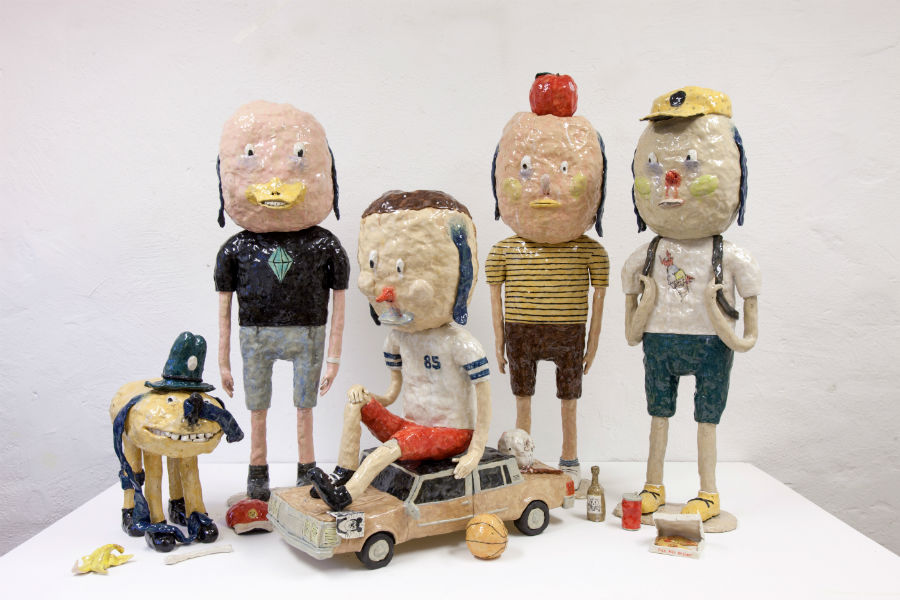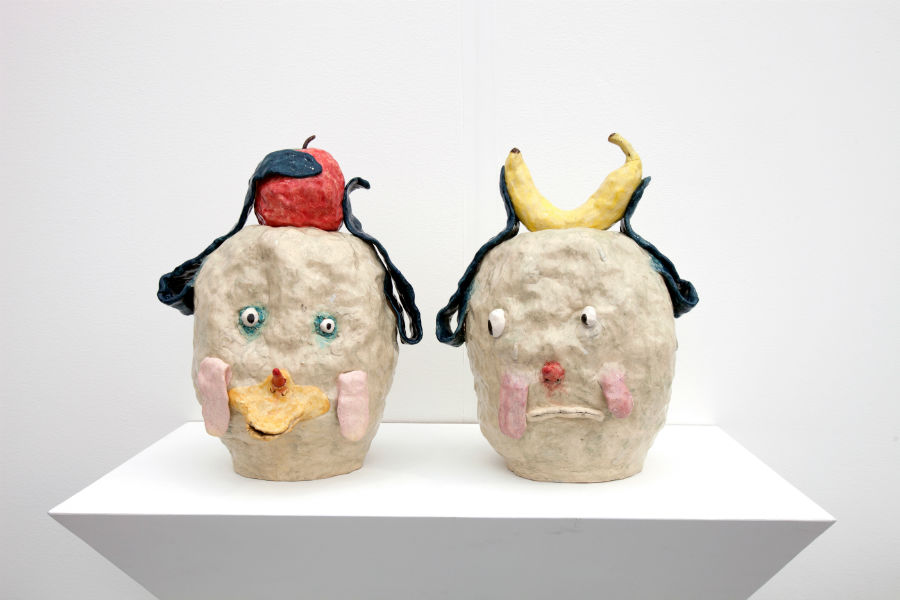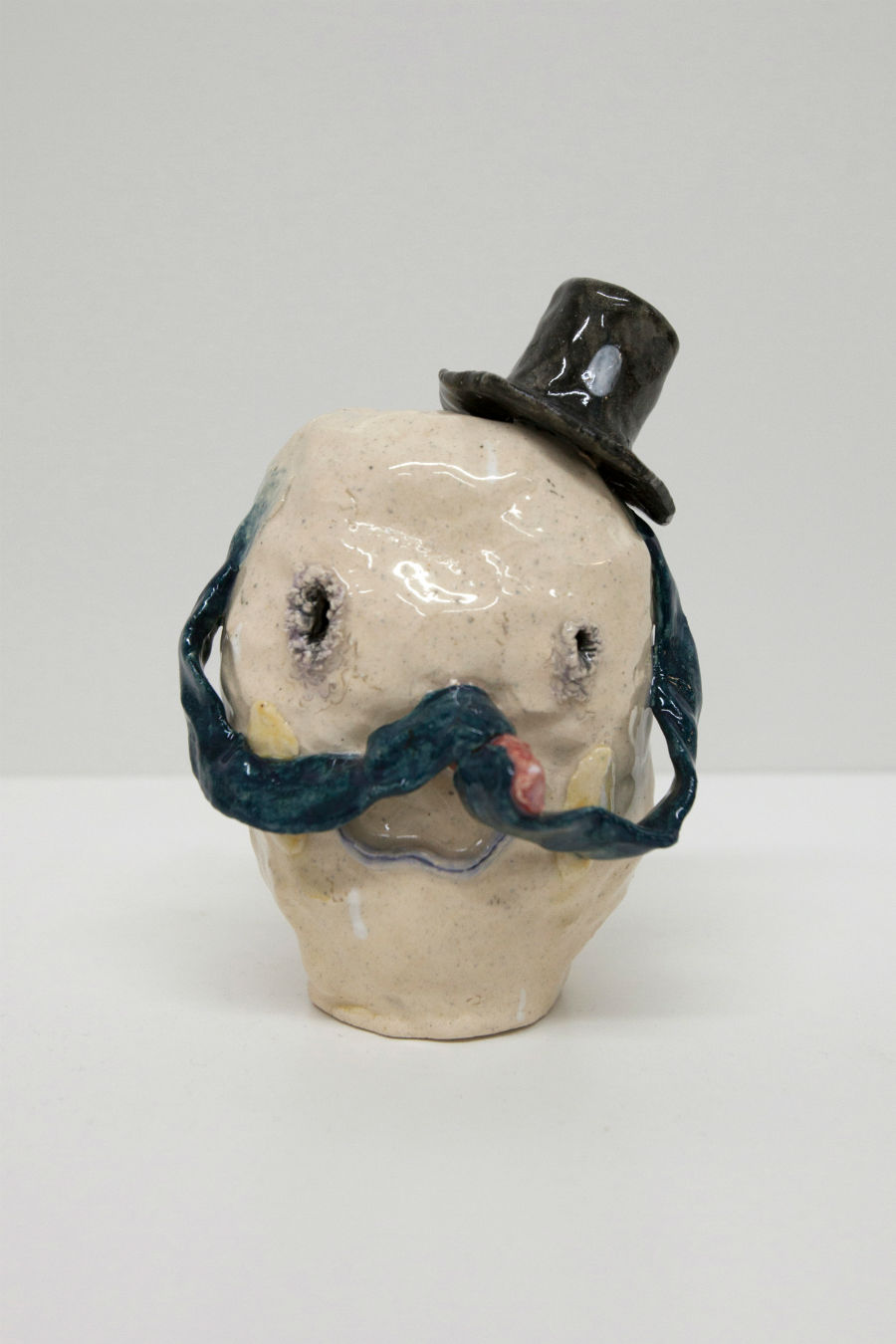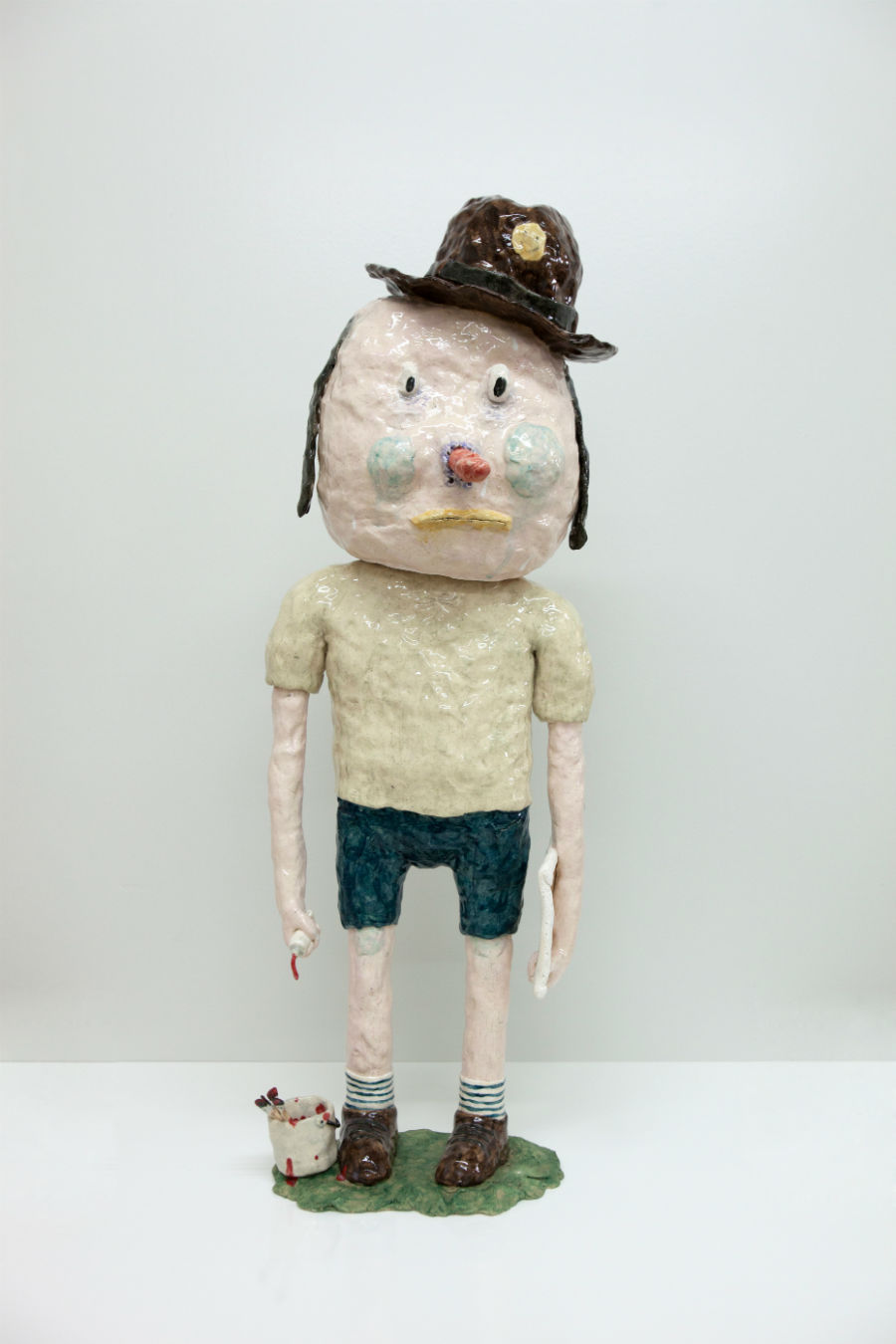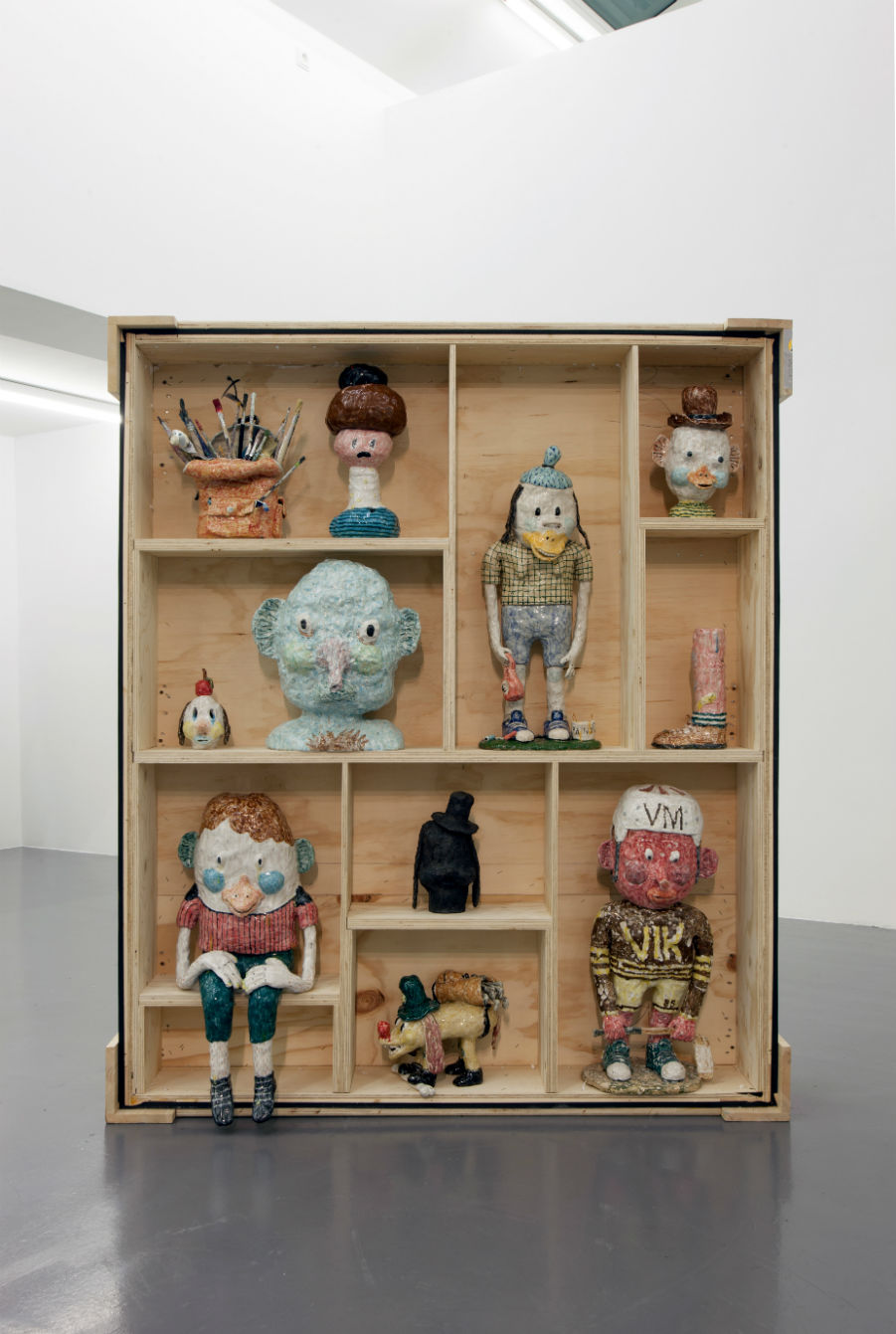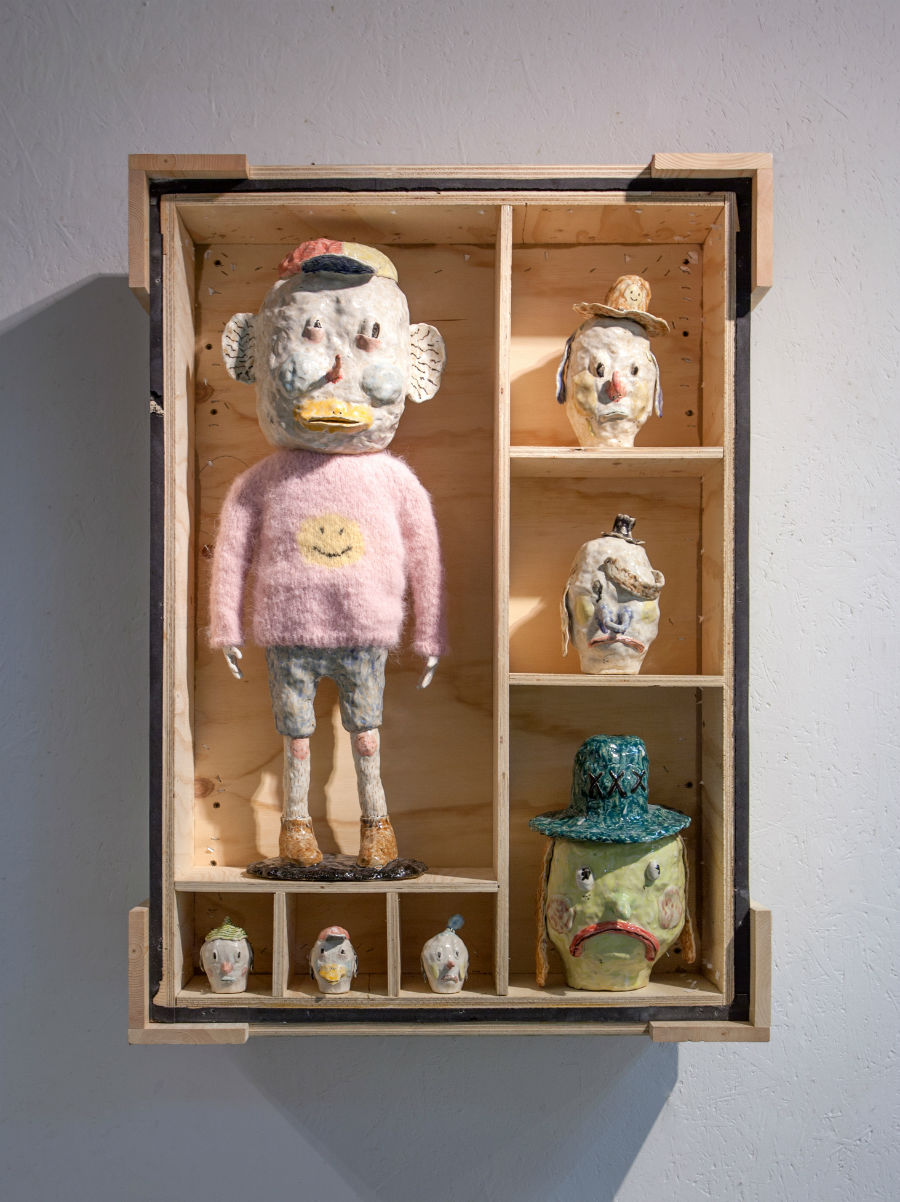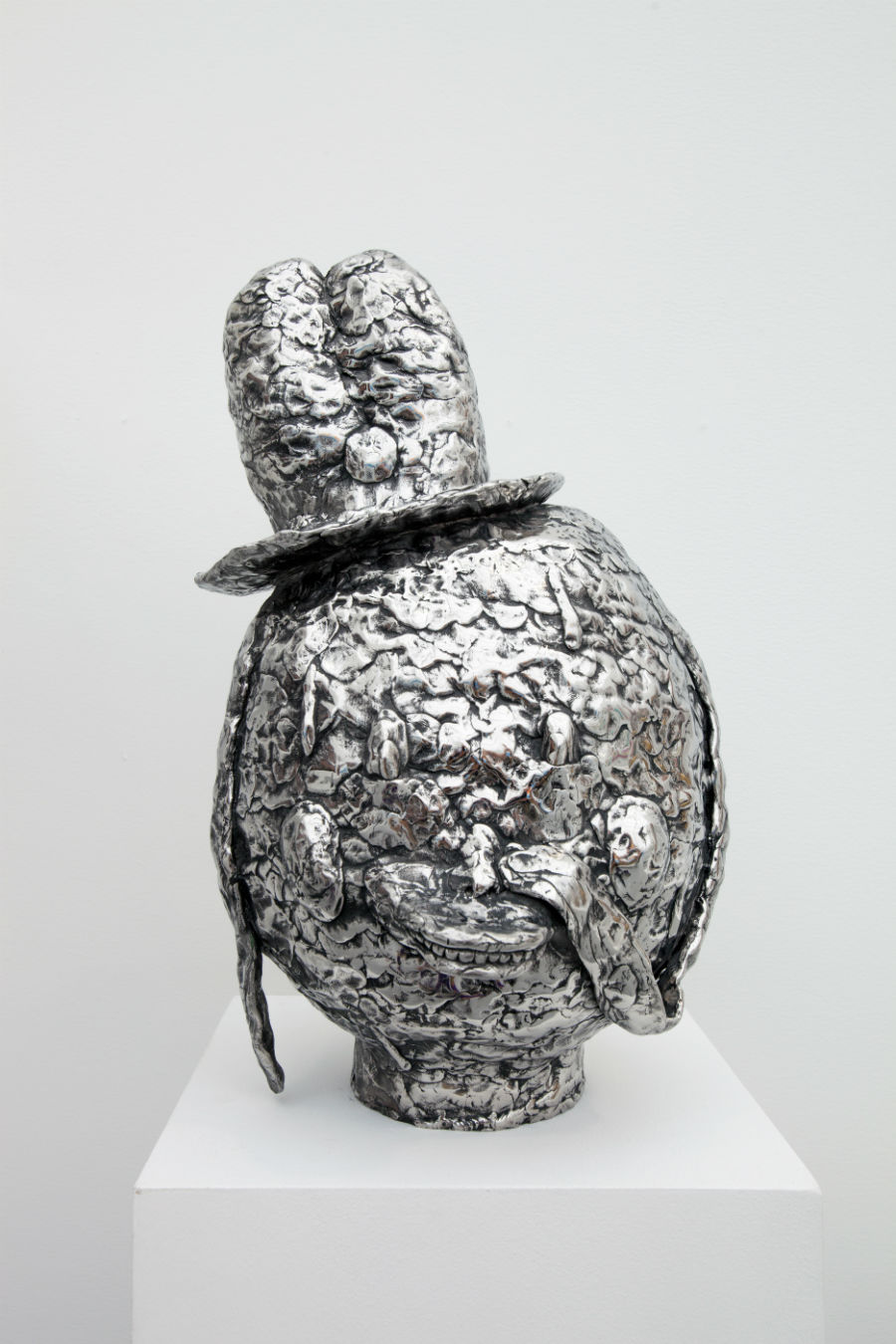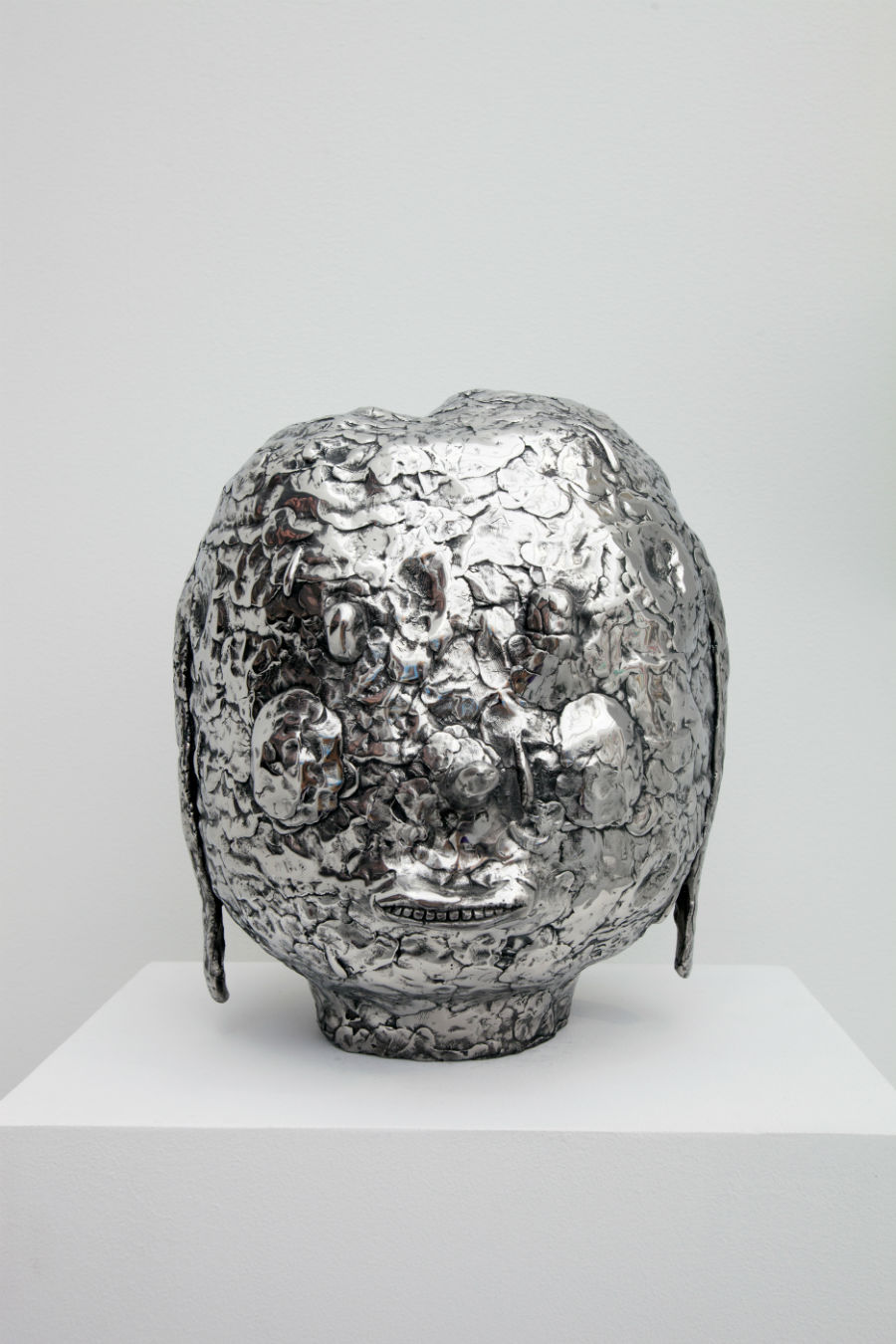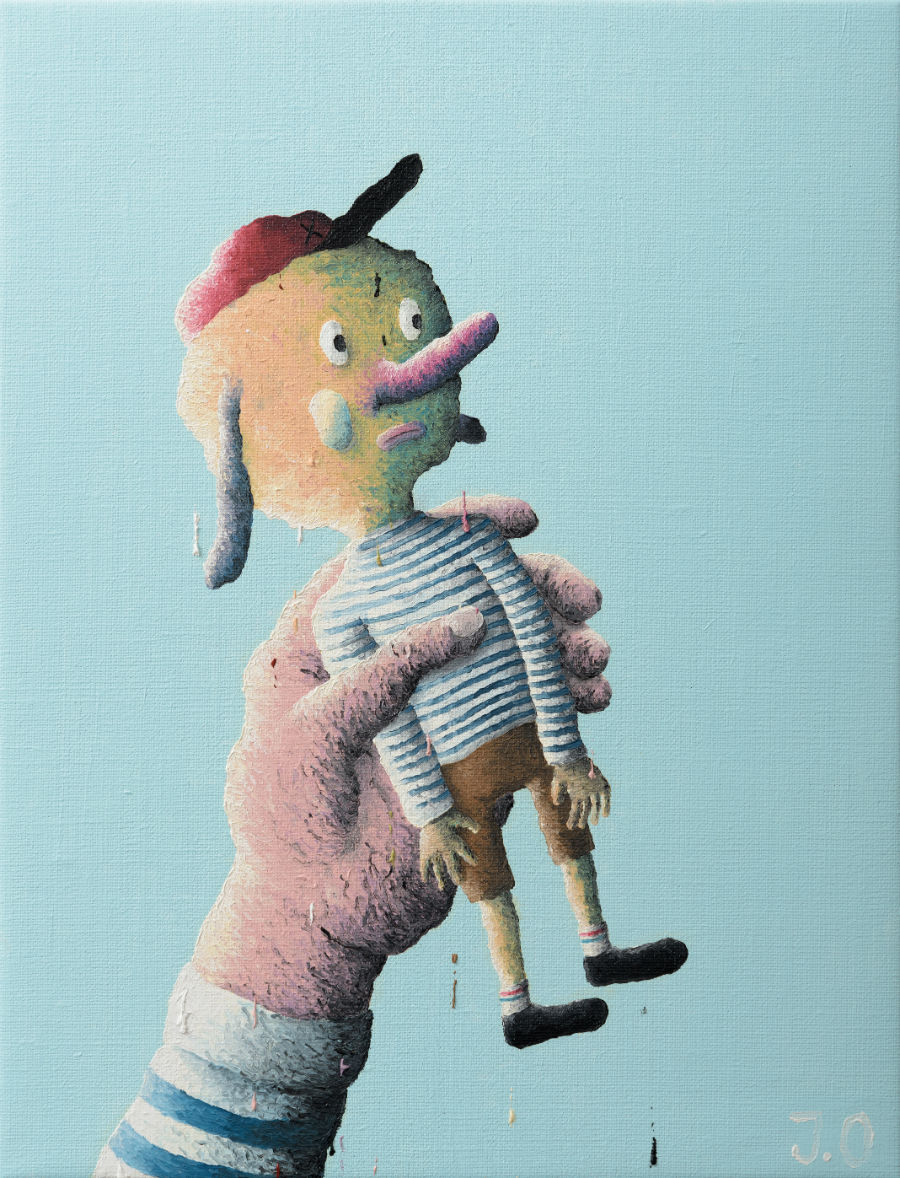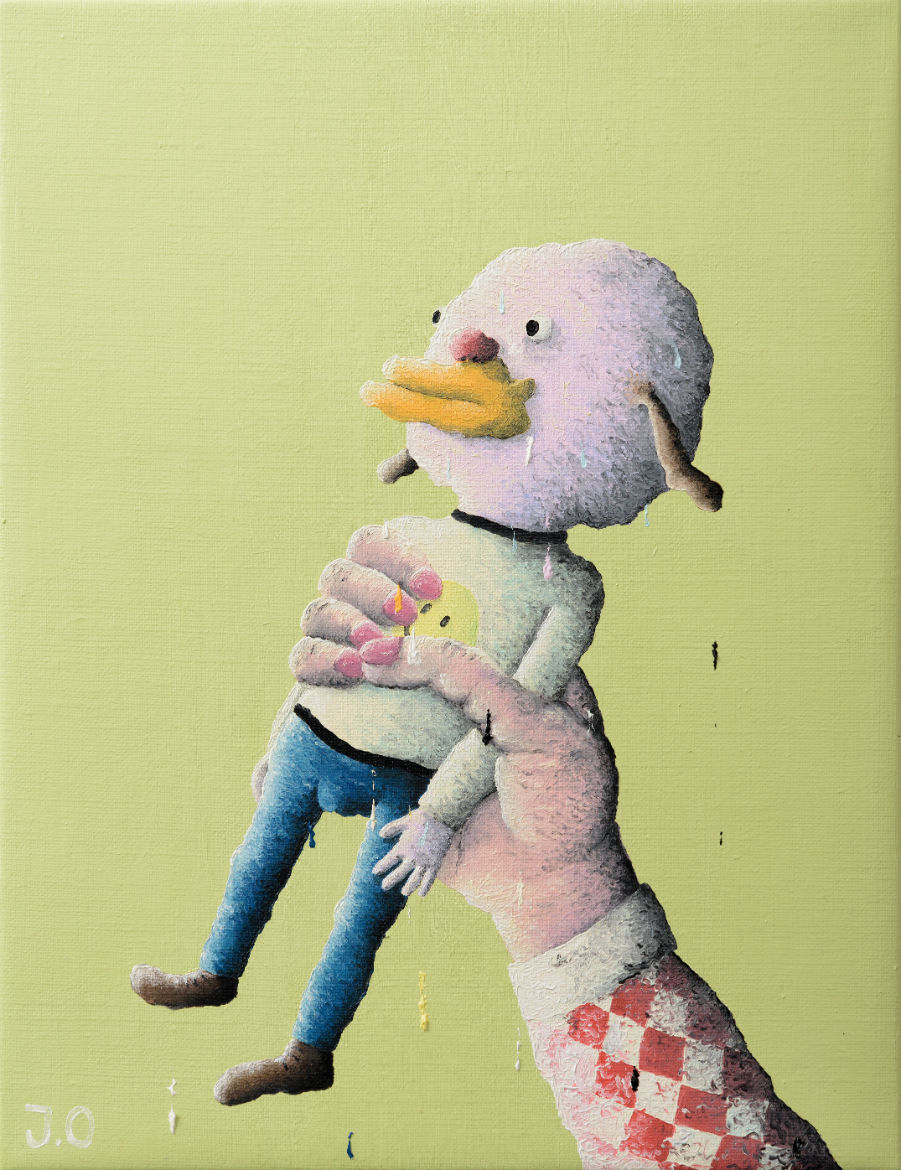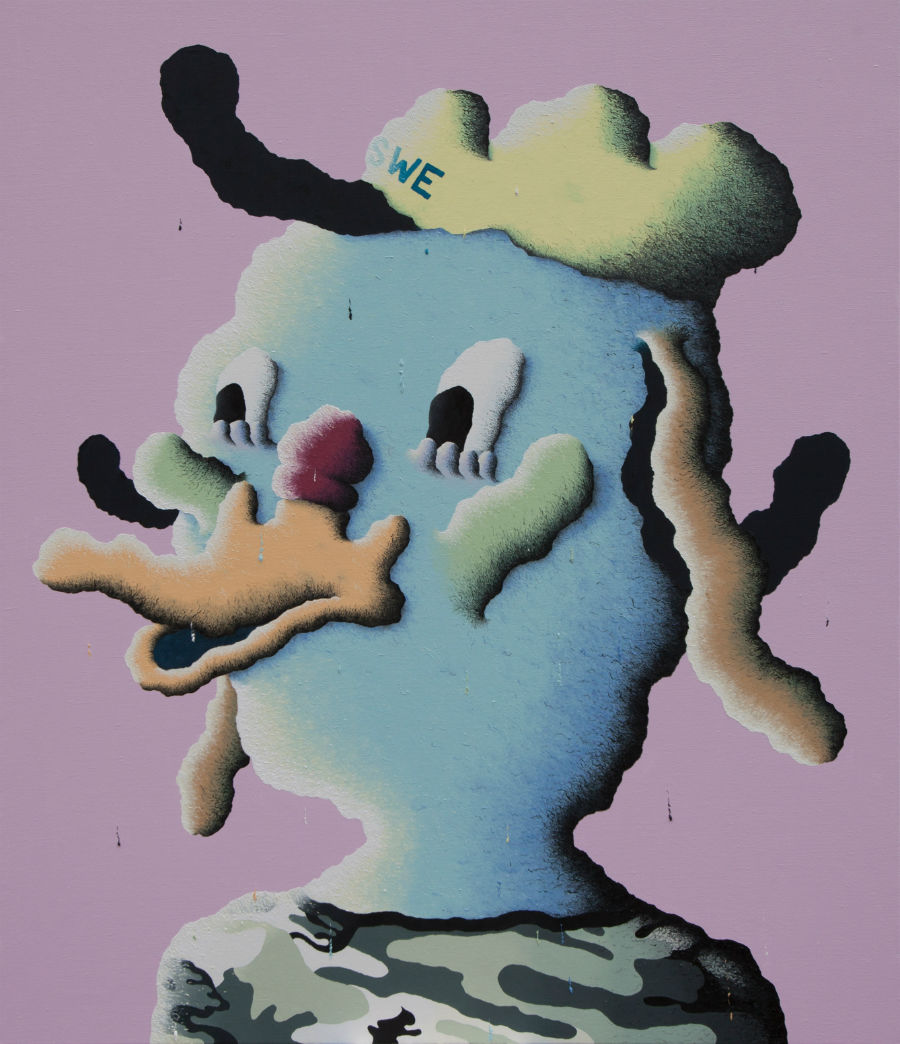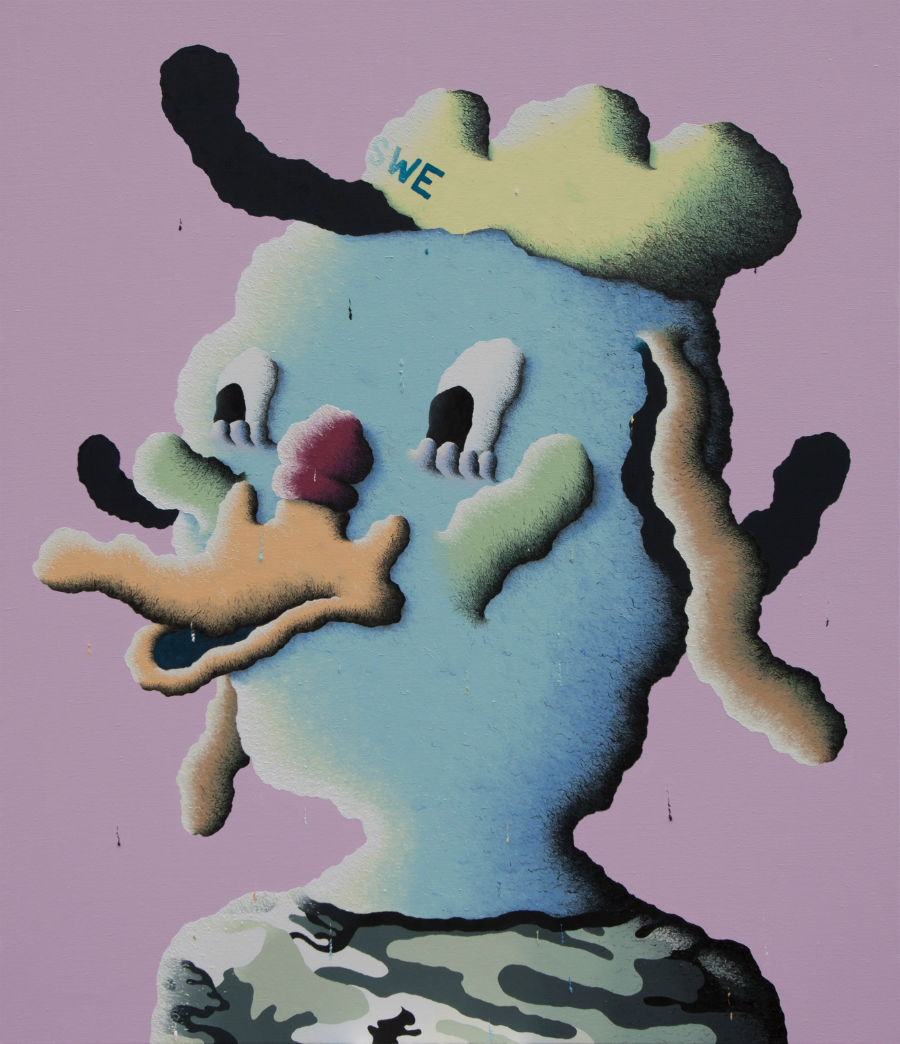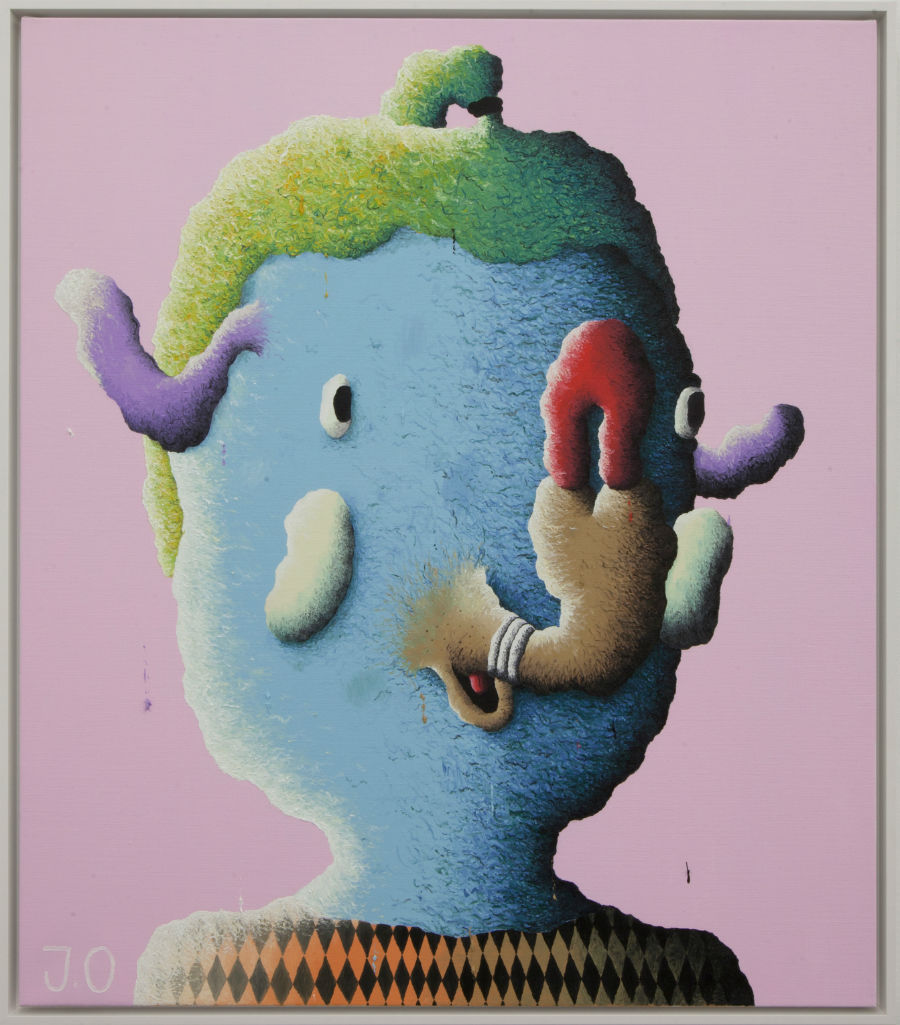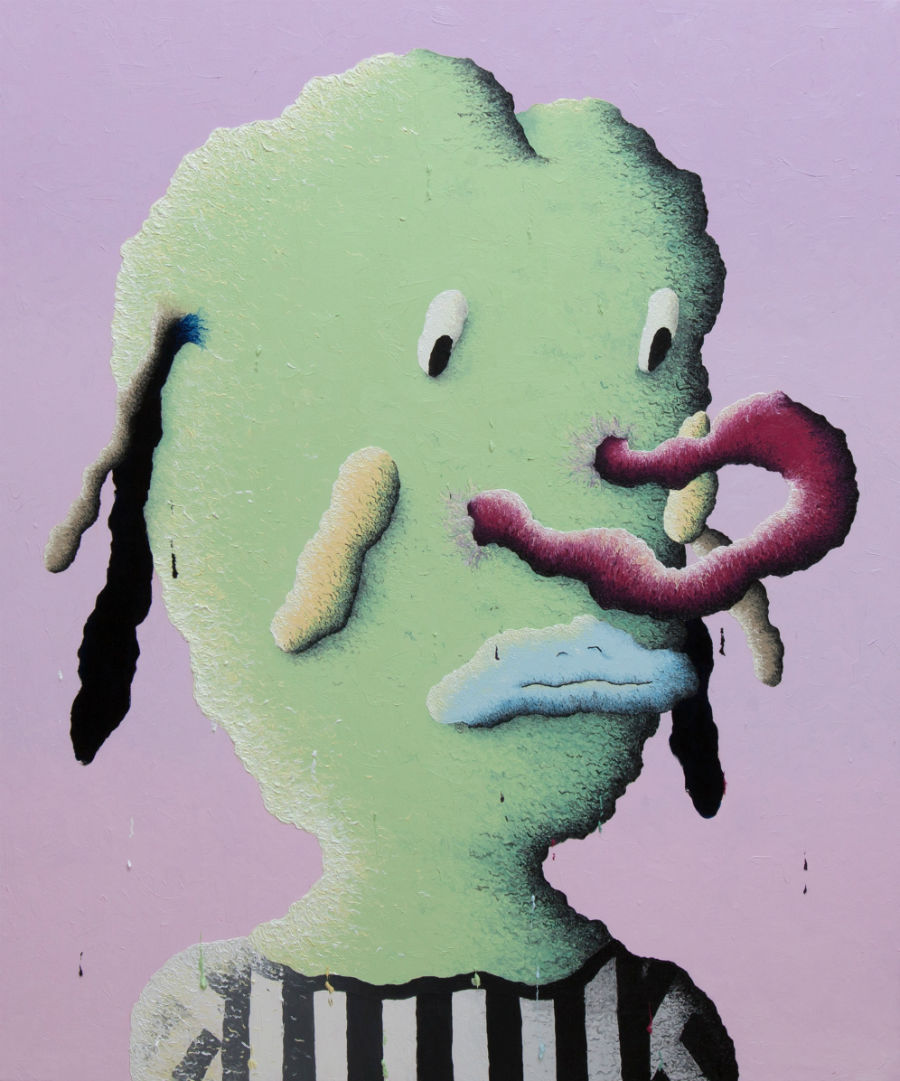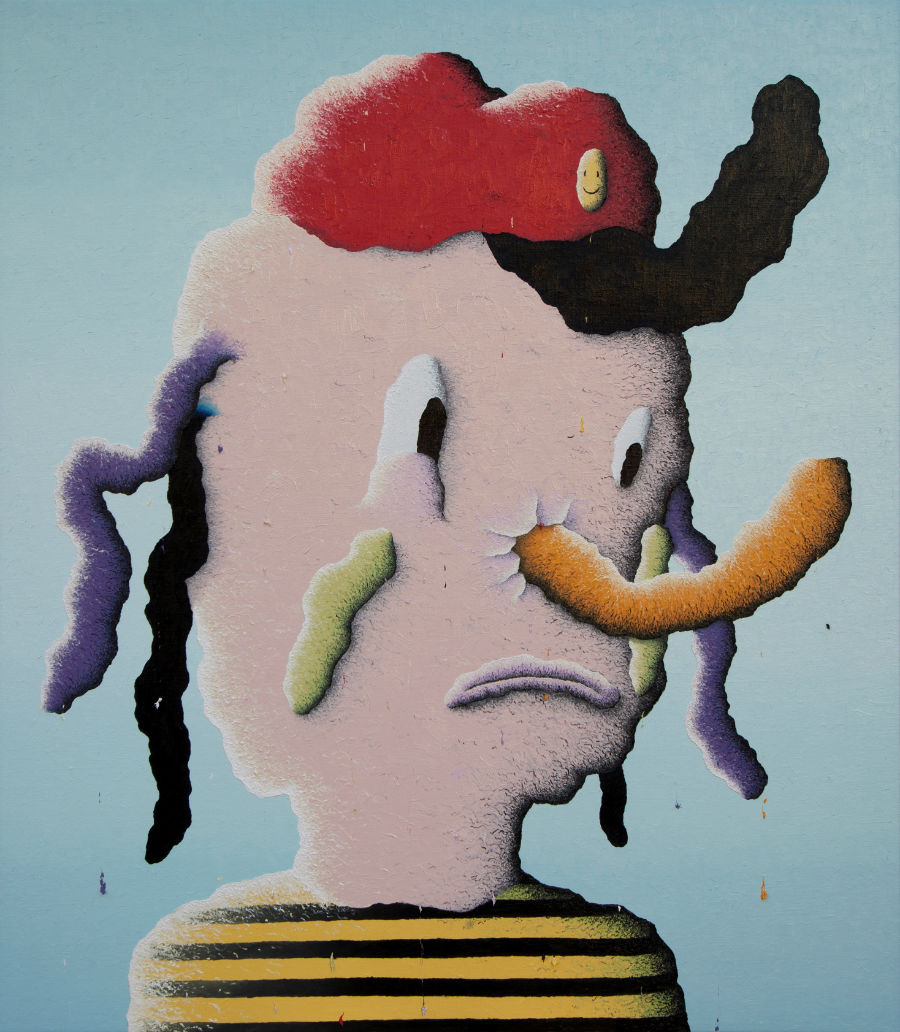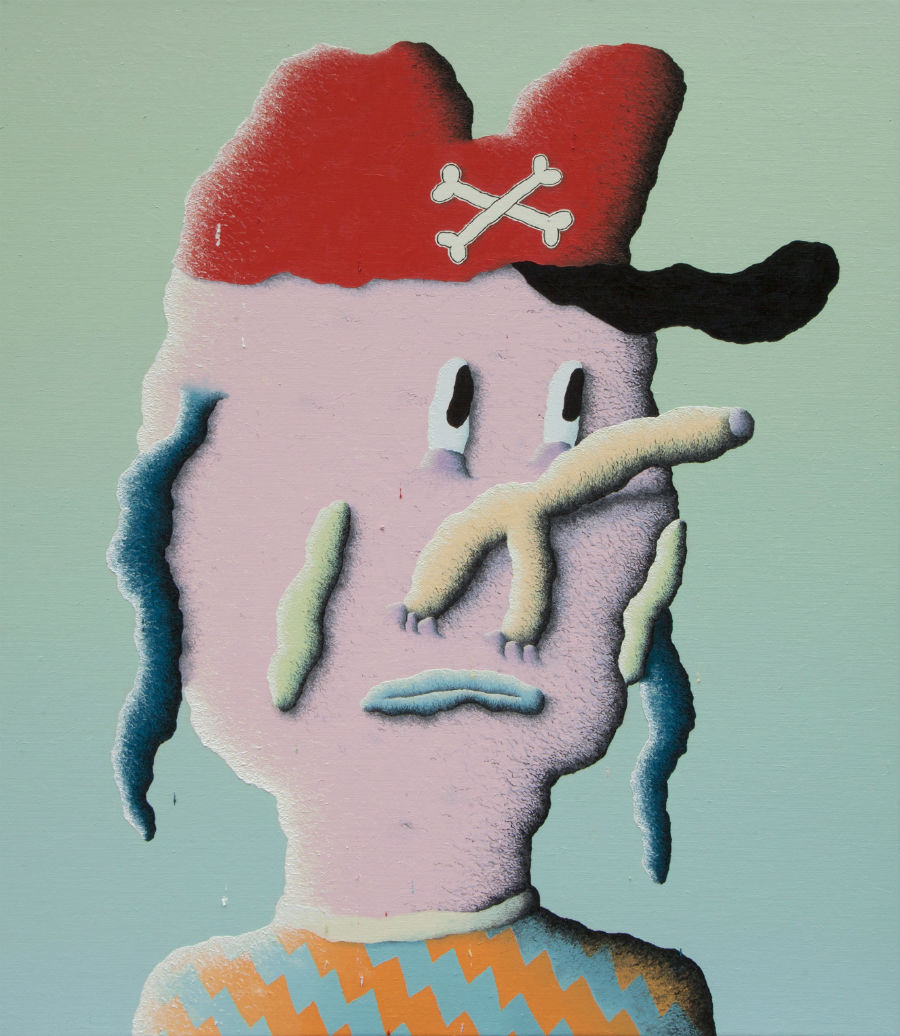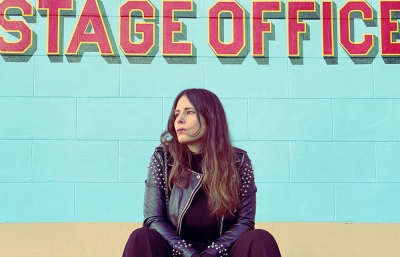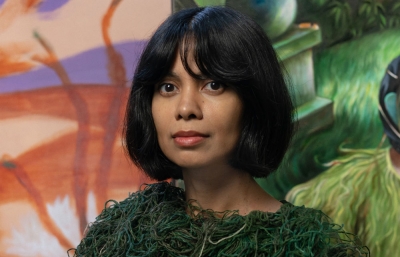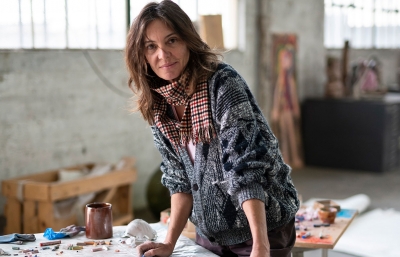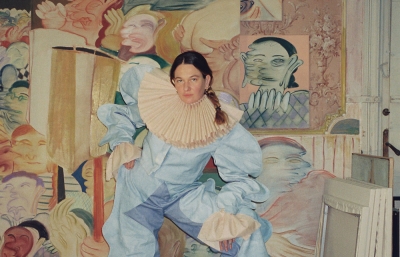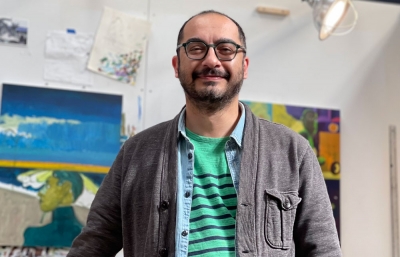
joakim ojanen
Merry Melancholy
Interview by Sasha Bogojev
Swedish artist Joakim Ojanen has created an entire universe packed with a diverse army of endearingly gloomy characters. His own Les Misérables, if you will. Over the past couple of years, these oddballs and their pet companions, sculpted in ceramic and painted in oils, quietly enjoy a pensive sadness while keeping their native cool. The life of these mavericks isn't an exciting one, but they are content—they hang out alone or in squads, occasionally read a book, draw, play, or have a cheeky beer or cigarette. So mundane, yet so lovable, they are cheery monuments to melancholy and its quirky beauty.
Sasha Bogojev: Why are ceramics your weapon of choice, and did you work with them from the start?
Joakim Ojanen: I actually started out studying illustration, mostly drawing and doing silkscreens, stuff like that. During second year, a friend and I were trying to find a hobby, so we went to this ceramics studio that was open to everyone, and we just started to play around. At first we made vases and stuff, but slowly the drawings I was doing at the time ended up in ceramic form, which was the base for my first small characters.
Was it difficult to learn how to work with ceramics?
Yeah, I had a really hard time in the beginning. Sometimes everything would just fall flat, but after working with the material for a while, I began to learn. I started to understand the rules, figuring out what was working or not, and learned to fire things the right way and avoid accidents in the kiln.
This doesn't sound like a formal education in ceramics...
No, not at all. At this studio, there were people we could ask a few things, but we basically learned ourselves.
And when did you start painting canvases?
It was around the same time that I started working with ceramics that I started to paint, but I also never got any education in painting really.
So you only formally studied illustration. Do you still illustrate at all?
Ha ha, no.
What is it about ceramics that you like so much?
I tried a couple of other materials before ceramics, but never found anything that was as direct; the way you are able to really get your fingers in it, you don't have to cast anything. Ceramics are pretty basic. You have the clay, you do something, let it dry and then fire it. I think I like that. It's a really direct approach because you build something up with your hands instead of carving it out or something like that.
Yeah, your work, both the paintings and sculptures, have this recognizable, rugged feel, either in the line work or the surface finish. Is there a reason why you prefer that?
I think because I work with really solid shapes, I need to have something that collides with that. If the lines or surfaces were really smooth, I don't think the work would be as interesting. I need something that works against really clean shapes.
Do you work exclusively in ceramics or have you tried other techniques?
Last summer I did a small bronze edition with Case Studyo in Belgium, and after that I did a few stainless steel casts with Richard Heller’s gallery, which were shown in Miami. More of those are being made right now in LA, so we'll see how they will turn out.
And what do you use when painting?
I always paint with oils. I want the colors to still be wet when I add the second layer, so they mix up a bit. I tried working with acrylics, but that just didn't work for me. There is something about it that makes it really stiff, not alive enough.
The colors you're using are very recognizable. How do you pick those, and do you have any color preferences?
When I started out, it was all black-and-white illustrations, but once I started doing silkscreens, I started working more with colors. They are quite creamy, candy-ish, but I don't have any purpose for them. It's just the colors I personally like. For the paintings, I usually pick three colors that I figure will work well together and start mapping them out and combining. I have a few that I use more often, but I always mix them myself.
Would you say you're a sculptor or painter, and how do you work between the two?
Over the last year, I've been sculpting a bit more, but I need both of them. It's really good for me to take a break from one material and work with another one. When I get stuck with something, a change of material helps me to get through the hard times. But I see myself as an artist that works both with sculptures and paintings.
Your body of work is pretty much all figurative. Is there a certain reason for that?
I don't know. I’ve always been interested in characters. Ever since I can remember, I was drawing my family with the house, and from there I moved on to comics. I would either copy them or make my own, so it all fits my background in creative expression.
Are they all part of the same world, or do they each have separate stories?
I think they belong all in the same world. Sometime I do small groups that form a squad or something, but they are all part of the same universe that I've been working with for a few years.
Do they relate between paintings and sculptures?
Yeah, they can relate. Sometimes I try to paint the sculptures or vice versa, but they don't really come off the same.
What influences your work? Are they based on real people or comics, or something else?
They are something that has been evolving for a long time. They definitely have their start somewhere in the comic world, but nowadays I don't read that many comics, which is a shame. I just don't have that much interest in them any longer, but I did keep the aesthetics of them with me.
So, would you say they are based on comics?
Well, I had a period in my early twenties when I was really into character design, doing animation and stuff like that. Then I was doing graffiti for a while, so I think all these different forms of expression have typical aesthetics that are close to each other, and they are all part of my visual language.
Was the graffiti a brief whim or was it an important part of your life?
It was really important because I picked it up from my twin older brothers who were doing it when I was eight or so. I started doing my own walls when I was around fourteen, and I kept it as my main interest for the next ten years.
Was that your gateway to the art world?
Yes, because I didn't have any other cultural influences around me, so this was the main source, and illustration came after it.
Were you doing the characters back then as well?
Not really because there was always someone else that was better at it. Characters were so tricky, and I was sketching them so much. But it took me many years before I could draw a character that I thought looked slightly OK. I wanted to do the graffiti characters, but couldn't do it. It made me practice and make my own, and I just kept on making them. Later, I worked for a production company and was the only one who couldn't make characters, which is the main thing I'm doing nowadays.
Do you get attached to your work?
Yes. It's more than just working with it, but when it's taking shape, I can almost talk to it. When I'm about to finish, that is when the relation is strongest. Once it's finished, it's there, but like a friend you haven't talked to in a while. I still like him and can remember the moments we had together, but that's the past now. So it's quite easy for me to leave works because we already had these nice moments together.
They are usually dressed like common people, wearing shirts with logos, shorts and hats. How do you chose those elements?
Many times I use clothes I have myself. Sometimes, when I go to secondhand stores, I'm looking for stuff that would look cool on them. I try to collect clothes or take photos or just remember them, because that is something I always struggle with when painting sculptures or making a painting. I always end up with the shirt as the last thing to paint because it can be really tricky for me. I want to get that part right, so it's always a struggle "what to wear" [laughs].
Your characters are mainly urban city kids. How does that relate to your childhood?
I've been thinking about the age of my characters, and I really can't set an age on them. They could be five years old or thirty at the same time. I think they are somewhere in that span, based on my own life, so I'll just keep them expanding.
Do other things from your surroundings influence your work, or is it mostly things from your head?
A lot of the work is not relevant to what's going on at the moment, but it's more about memories from my life. It's not a certain happening, but more of a glimpse of something I have in my memory. Like the clothes or other little details like that.
Do you want your work to be funny, narrative, or just plain interesting?
I definitely like the comic aspect of my work, but I also want characters to have a lot of feelings that aren't easy to show. I want to make them vulnerable somehow. I want both sides of tragic and comic to be present, and in balance. And not just sad or happy, but layers of different feelings.
They can seem quite melancholic or dispirited. What influences that? The Scandinavian weather and surroundings, and the whole depression thing it’s known for?
I think so, definitely. There is definitely a lot of melancholy in Sweden and I’ve always felt that it can be a nice thing. It's not really sadness, but more a way of living somehow. When I was younger, in my teenage years, I embraced it a lot. So that is definitely something you can see in my work.

They have lot of surrealistic, exaggerated features. How do those come to life? Do you build a character around them, or do you "mess up" a normal character?
For the sculptures, I do the shape of the head first and then try different features. I build it part-by-part and usually try to do something that is unexpected and create a personality that I haven't seen before. After all these years, I have all these tools in my toolbox, different noses, eyes, and mouths, which I try to mix, as well as create new ones to put in the toolbox. From there, they tend to get more crazy, like ears that can function like arms or long floppy cheeks. I think it’s a need to evolve and a need to do something new at the same time. When I'm in the studio, I'm usually alone, so I need to keep it interesting.
The work feels very playful. Do you think that’s because of your cheerful approach to creating it?
I think I need that part because otherwise I would be bored and the work would probably be much more boring to look at. I think a lot of the playfulness and feelings are a reflection of the process of making them.
Do you ever make female characters?
Yeah. I made a few.
How come there is such disproportion there?
That's a good question. I think it's just because I see most of them like self portraits. I try to make females every now and then, but they are not a homerun every time.
Your figures have pets...
Yes, mostly dogs, but there are human characters that have dog parts on them too. They can be a bit happier or stupider than their human friends.
Do you have a dog?
I don't, but I'm thinking of getting one. The problem is that I travel a lot, so maybe in a few years.
Did you have any aspirations to show around the world when you started working?
There is one part when I'm in the studio, working, just doing the thing that I love to do, and not thinking about the business part of it. But then I'm also really interested in art and other artists, so I try to go to shows, do studio visits, it's like a hobby of mine. I really like that part, so somewhere in between, there might be a, "Yeah, it would be nice to show with these guys."
And speaking of other artists, did you ever collaborate?
Not really. I tried doing some collaborations in the past, but I don't like to compromise [laughs]. I do like showing with other people in group shows where you can see some similarities and stuff. But, in general, I think I'm a bad collaborator.
Do you have any other passion or interest beside art?
That is the problem. When I try to find a hobby, it becomes the thing that I do.
What does your work routine look like?
I try to get started on something. Once I've started, I'll find something in it that will keep me going, so there will be results from it. I try to go to the studio every day and just make stuff. I have a really hard time sketching things out because I need to feel the material in order to find something in it. It's a lot of trying.
Does that get frustrating?
Yeah, sometimes it would be nice to have a finished sketch. For paintings, I actually do a small sketch as a base, but I never settle on colors before I start. That would be really boring to have everything predetermined. I guess it's also a way for me to keep things interesting for myself.
Do you have any bigger career goals or plans?
I'm working on a big group of sculptures for the children’s hospital in Gothenburg, Sweden, which will be finished in 2020. They're going to be a bit larger, so the biggest one will be around six meters tall. They're going to be installed outside of the hospital so kids can play and climb on them. I'm looking forward to that because I've been already working on it for a year and a half. I'm also interested in exploring other materials more.
What about shows?
I just had a show in Paris, and will be showing with Ruttkowski;68 in Cologne, Germany in December, and will be in couple of group shows in between.


